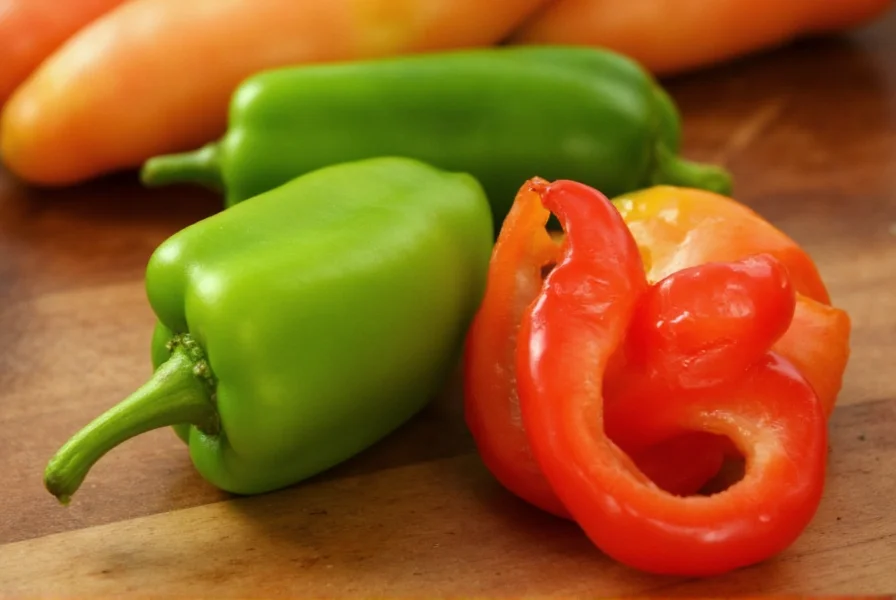Table of Contents
What Are Mild Hot Peppers?
Mild hot peppers are chili peppers with a Scoville Heat Unit (SHU) rating between 1,000 and 10,000, delivering subtle heat without overwhelming spiciness. They're perfect for beginners and those who want flavor without intense burn, making them versatile for everyday cooking. This guide covers key varieties, cooking techniques, and buying tips to help you master these peppers.
Practical Tips for Cooking with Mild Hot Peppers
Maximize flavor while controlling heat with these expert techniques:
- Start Small: Even mild peppers vary in heat. Add one pepper at a time and adjust gradually.
- Remove Seeds and Membranes: 80% of capsaicin (heat compound) is in these parts. Removing them reduces intensity significantly.
- Roast for Depth: Roasting caramelizes natural sugars and enhances smoky notes. Try charring poblano peppers for chiles rellenos.
- Balancing Act: Pair with cooling ingredients like Greek yogurt, avocado, or coconut milk to neutralize heat while preserving flavor.
- Dried vs. Fresh: Use fresh peppers for bright, crisp flavor in salsas. Dried versions (like ancho peppers) add earthy depth to stews and sauces.
Mild Hot Pepper Varieties Explained
| Pepper Name | Heat Level (Scoville Units) | Taste Profile | Best Uses |
|---|---|---|---|
| Jalapeño | 2,500–8,000 | Grassy, slightly sweet | Guacamole, salsa, stuffed peppers |
| Serrano | 10,000–23,000 | Crunchy, citrusy | Hot sauces, salsas, pickling |
| Poblano | 1,000–1,500 | Earthy, slightly sweet | Chiles rellenos, soups, stews |
| Anaheim | 1,000–2,500 | Smoky, mild | Stuffed peppers, roasting, chili |
| Jimmy Nardello | 1,000–1,500 | Sweet, bell-like | Grilling, roasting, salads |
Each variety offers unique characteristics. For example, Jimmy Nardello peppers are nearly sweet with minimal heat, while Serranos provide a sharper kick. Always check the specific SHU range for your recipe needs.
How to Choose the Right Mild Hot Pepper
Key Selection Criteria
- Freshness Check: Firm skin with no soft spots or wrinkles. Glossy appearance indicates peak quality.
- Color Matters: Green peppers are unripe and milder; red/orange varieties are sweeter and more mature.
- Size vs. Heat: Smaller peppers within a variety tend to be hotter. For consistent mildness, choose larger specimens.
- Scent Test: A fresh, slightly sweet aroma confirms quality. Avoid peppers with musty or sour smells.
Top Varieties by Use Case
- Beginner-Friendly: Poblano (1,000 SHU) and Jimmy Nardello (1,000 SHU) offer near-sweet flavor with minimal heat.
- Everyday Cooking: Jalapeño (2,500-8,000 SHU) is widely available and versatile for salsas, tacos, and more.
- Flavor-Forward Dishes: Anaheim (1,000-2,500 SHU) adds smoky depth to roasted vegetables and chili without overpowering heat.
When to Use Each Variety
- Weeknight Meals: Jalapeños in stir-fries or quick salsas.
- Special Occasions: Roasted poblanos for stuffed peppers or chiles rellenos.
- Brunch Dishes: Jimmy Nardello peppers in omelets or avocado toast toppings.
- Party Snacks: Serranos in fresh salsa or pickled for nachos.
Why Mild Hot Peppers Belong in Your Kitchen
Mild hot peppers unlock a world of flavor without the burn. Whether you're a beginner exploring spice or a seasoned cook seeking nuance, these peppers offer perfect balance. Remember: the key to success is matching the pepper variety to your dish's needs and adjusting heat levels carefully. With this guide, you'll confidently select, prepare, and enjoy mild hot peppers in every meal.











 浙公网安备
33010002000092号
浙公网安备
33010002000092号 浙B2-20120091-4
浙B2-20120091-4